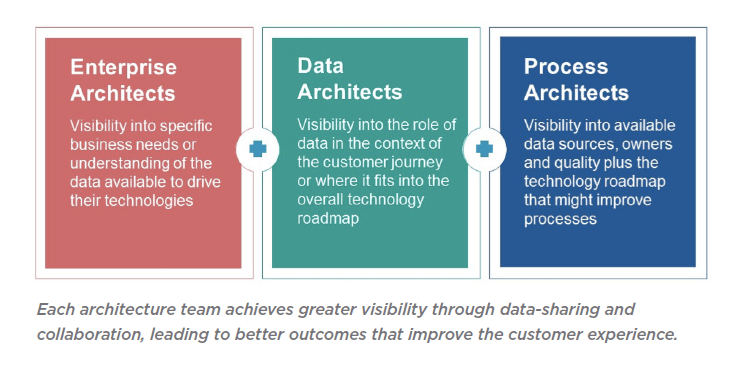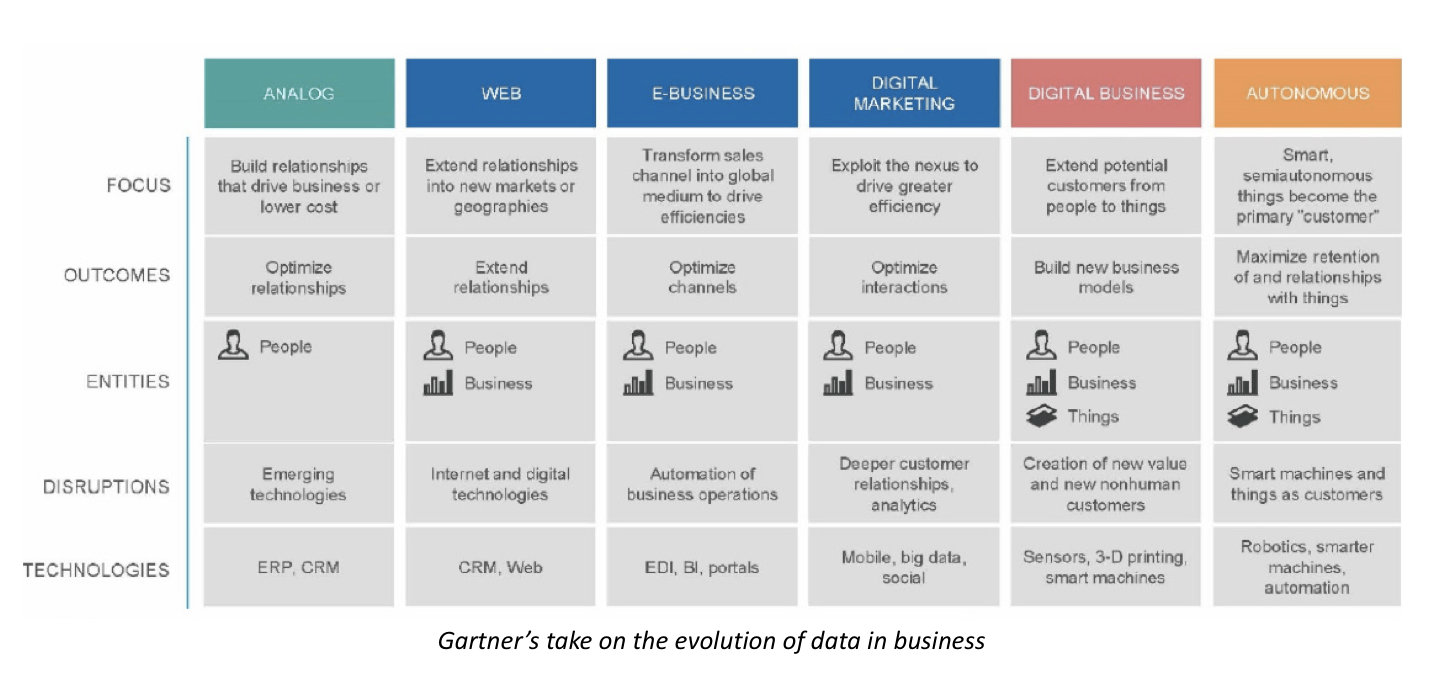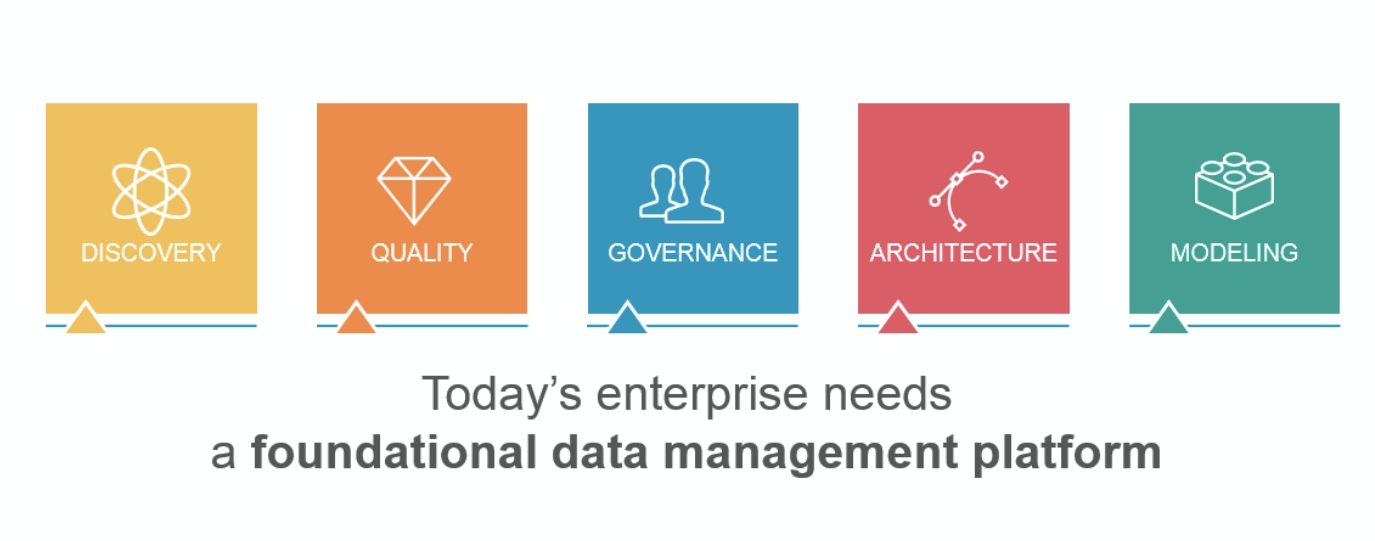Despite the nomenclature, enterprise architecture, data architecture and business process architecture are very different disciplines. Despite this, organizations that combine the disciplines enjoy much greater success in data management.
Both an understanding of the differences between the three and an understanding of how the three work together, has to start with understanding the disciplines individually:
What is Enterprise Architecture?
Enterprise architecture defines the structure and operation of an organization. Its desired outcome is to determine current and future objectives and translate those goals into a blueprint of IT capabilities.
A useful analogy for understanding enterprise architecture is city planning. A city planner devises the blueprint for how a city will come together, and how it will be interacted with. They need to be cognizant of regulations (zoning laws) and understand the current state of city and its infrastructure.
A good city planner means less false starts, less waste and a faster, more efficient carrying out of the project.
In this respect, a good enterprise architect is a lot like a good city planner.
What is Data Architecture?
The Data Management Body of Knowledge (DMBOK), define data architecture as “specifications used to describe existing state, define data requirements, guide data integration, and control data assets as put forth in a data strategy.”
So data architecture involves models, policy rules or standards that govern what data is collected and how it is stored, arranged, integrated and used within an organization and its various systems. The desired outcome is enabling stakeholders to see business-critical information regardless of its source and relate to it from their unique perspectives.
There is some crossover between enterprise and data architecture. This is because data architecture is inherently an offshoot of enterprise architecture. Where enterprise architects take a holistic, enterprise-wide view in their duties, data architects tasks are much more refined, and focussed. If an enterprise architect is the city planner, then a data architect is an infrastructure specialist – think plumbers, electricians etc.
For a more in depth look into enterprise architecture vs data architecture, see: The Difference Between Data Architecture and Enterprise Architecture
What is Business Process Architecture?
Business process architecture describes an organization’s business model, strategy, goals and performance metrics.
It provides organizations with a method of representing the elements of their business and how they interact with the aim of aligning people, processes, data, technologies and applications to meet organizational objectives. With it, organizations can paint a real-world picture of how they function, including opportunities to create, improve, harmonize or eliminate processes to improve overall performance and profitability.
Enterprise, Data and Business Process Architecture in Action
A successful data-driven business combines enterprise architecture, data architecture and business process architecture. Integrating these disciplines from the ground up ensures a solid digital foundation on which to build. A strong foundation is necessary because of the amount of data businesses already have to manage. In the last two years, more data has been created than in all of humanity’s history.
And it’s still soaring. Analysts predict that by 2020, we’ll create about 1.7 megabytes of new information every second for every human being on the planet.
While it’s a lot to manage, the potential gains of becoming a data-driven enterprise are too high to ignore. Fortune 1000 companies could potentially net an additional $65 million in income with access to just 10 percent more of their data.
To effectively employ enterprise architecture, data architecture and business process architecture, it’s important to know the differences in how they operate and their desired business outcomes.
Combining Enterprise, Data and Business Process Architecture for Better Data Management
Historically, these three disciplines have been siloed, without an inherent means of sharing information. Therefore, collaboration between the tools and relevant stakeholders has been difficult.
To truly power a data-driven business, removing these silos is paramount, so as not to limit the potential analysis your organization can carry out. Businesses that understand and adopt this approach will benefit from much better data management when it comes to the ‘3 Vs.’
They’ll be better able to cope with the massive volumes of data a data-driven business will introduce; be better equipped to handle increased velocity of data, processing data accurately and quickly in order to keep time to markets low; and be able to effectively manage data from a growing variety of different sources.
In essence, enabling collaboration between enterprise architecture, data architecture and business process architecture helps an organization manage “any data, anywhere” – or Any2. This all-encompassing view provides the potential for deeper data analysis.
However, attempting to manage all your data without all the necessary tools is like trying to read a book without all the chapters. And trying to manage data with a host of uncollaborative, disparate tools is like trying to read a story with chapters from different books. Clearly neither approach is ideal.
Unifying the disciplines as the foundation for data management provides organizations with the whole ‘data story.’
The importance of getting the whole data story should be very clear considering the aforementioned statistic – Fortune 1000 companies could potentially net an additional $65 million in income with access to just 10 percent more of their data.
Download our eBook, Solving the Enterprise Data Dilemma to learn more about data management tools, particularly enterprise architecture, data architecture and business process architecture, working in tandem.












